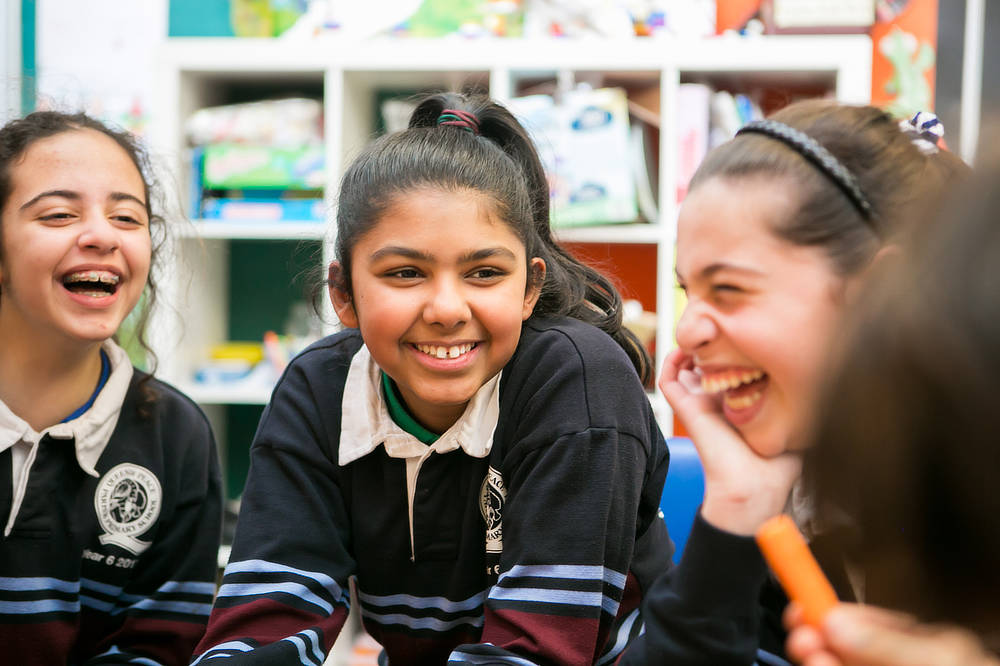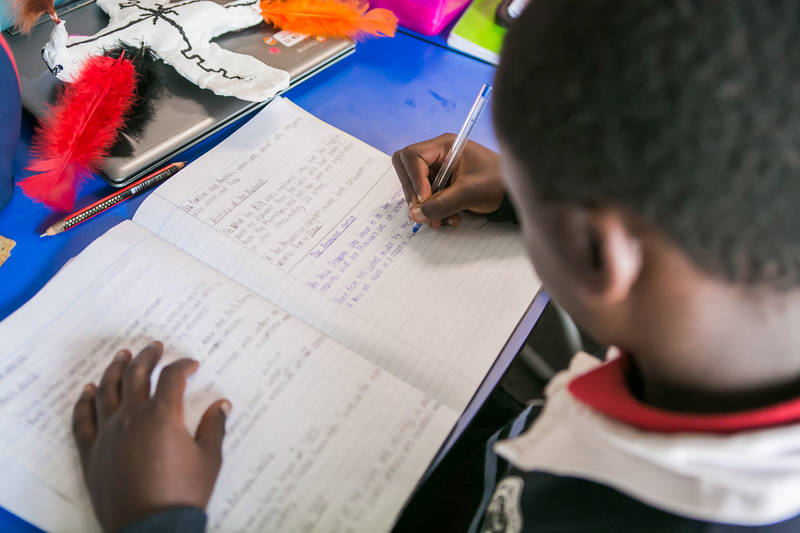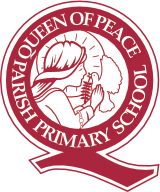Curriculum Overview
The Parish Priest and the school staff view the school as a Christ-centred catholic community; therefore development of Gospel values is nurtured in the children and permeates all curriculum areas.

Horizons of Hope
At Queen of Peace we are guided by the Education Framework for the Archdiocese of Melbourne, Horizons of Hope. This document supports Catholic school communities to engage in dialogue about the distinctive nature of learning and teaching in Catholic Schools and to work together in the pursuit of excellence within a Catholic context. Horizons of Hope challenges us to respond to the changing demands of education and to meet the needs of each child. “Young people call us to renewed and expansive hope, for they represent new directions for humanity and open us up to the future.” (Pope Francis 2013)
Victorian Curriculum
At Queen of Peace we structure our learning curriculum on the Victorian Curriculum F-10 which incorporates the Australian Curriculum and reflects Victorian priorities and standards.This curriculum is the common set of knowledge and skills required by our children for lifelong learning, social development and active and informed citizenship. The Victorian Curriculum F-10 provides for 11 levels for English and Mathematics (Prep to Year 10) and 2 year bands (eg: Yrs 1 and 2) for most other learning areas (subjects). Curriculum planning at Queen of Peace is based on two year bands of schooling rather than each year level. In Faith Life Inquiry the learning is organised in units with significant content across, and within learning areas selected to develop the children’s understanding of the world.
In addition, the school offers students the opportunity to partake in:
- Keyboard tuition
- Violin tuition
- Guitar tuition
- Community based projects
Queen of Peace is an
- Asthma Friendly School
- Sun Smart School.
- eSmart School.
A Before & After School Care Program runs at Queen of Peace
Learning at QoP
The specific learning that is happening at Queen of Peace is communicated to parents and caregivers through the “Learning at QoP” publication and Seesaw App. “Learning at QoP” is distributed at the beginning of each term and provides important information about the planned curriculum for the term. This document is available by clicking the link below. Seesaw is an educational App that is used throughout the term to showcase the children’s learning and can be accessed at any time by parents and caregivers. Seesaw allows children to document their learning throughout the term as they add work samples, photos, videos and other learning artefacts. Together, “Learning at QoP” and the Seesaw App help you stay informed about what your child is learning at school.
Learning at QOP Term 1, 2025
English
In English, we are guided by the Victorian Curriculum with the aims and intentions of the Horizons of Hope. It is intended that the children develop their knowledge, understanding and skills across the strands of Language, Literature and Literacy. It aims at ensuring the three modes of listening and speaking, reading and viewing and writing are all connected. Teachers regularly gather and use data about the explicit needs of children to inform learning and teaching. When planning, many Literacy links are made across the curriculum, such as Faith Life Inquiry, the Capabilities and The Arts.

Mathematics
In Maths, we are guided by the Victorian Curriculum with the aims and intentions of the Horizons of Hope. Mathematical content is taken from the strands of Number and Algebra, Measurement and Geometry and Statistics and Probability. We aim to use data from pre and post assessments to inform our teaching and differentiate the learning experiences according to the needs of our children. Facilitated Planning during the term allows for rich discussion and shared collaboration of ideas among the teachers.
Inquiry Learning
At Queen of Peace we use a blend of Explicit Teaching and Inquiry Learning to give children foundational knowledge and understanding, then challenge them to ask questions, gather and analyse information, find solutions, make decisions, justify conclusions and take action.
The children are guided through the learning process using a series of scaffolds and supports with clear statements about the purpose of the learning and what success might look like. The learning experiences are structured as opportunities to apply knowledge and skills in real-world, authentic situations.
Inquiry learning emphasises process as well as product, moving away from just learning facts to the development of understanding about concepts. The learning areas of History, Science, Geography, Economics, Civics and Citizenship and Design Technologies are taught through Explicit Teaching and Inquiry Learning. Children from Year Prep to Year 6 engage with these Learning Areas though whole school umbrella concepts; Responsibility and Service, Belonging, Change, Innovation, Wellbeing, Discovery, Places, Decision Making and Sustainability.
Digital Technologies
At Queen of Peace we strive to move beyond the use of digital technologies as a substitution or modification of traditional teaching methods. We aim to redefine digital technologies and create rich learning opportunities that are applicable for our 21st century world.
Our children engage in a number of programs that enable exposure to multiple devices and platforms that create greater digital literacy competencies for all. Some of these include –
- A 1-1 iPad program for our years 4, 5 and 6 children
- Access for all children in the school to iPads, Chromebooks, Laptops & robotics.
- The use of digital portfolios to reflect and share work.
- The use of industry standard software such as G Suite (Google Apps for Education)
- A comprehensive e Safety program.
STEM
STEM education refers collectively to the teaching of Science, Technology, Engineering and Mathematics. The underlying purpose of STEM education is to equip children with critical thinking, computational thinking, problem solving, creativity and communication skills necessary for future success.
STEM is part of everyday life and an increasing part of every workplace. STEM education enables children to develop solutions to complex problems and provides them with literacies and capabilities that will help them succeed in a world of technological change. Learning in STEM can be through discrete learning areas (subjects) where the content, skills and processes of each learning area are developed or through a holistic approach to learning which integrates the study of Science, Technology, Engineering and Mathematics.
STEM knowledge, understanding and skills are included in the Victorian Curriculum learning areas of Science, Mathematics and Technologies. While Engineering is not a distinct Victorian Curriculum learning area, engineering processes and skills can be found in Science, Mathematics and Technologies. In the Design and Technologies learning area, specific engineering content is included in the Technologies Contexts strand under Engineering Principles and Systems, and in the Creating Solutions strand in both Design and Technologies and Digital Technologies learning areas.
